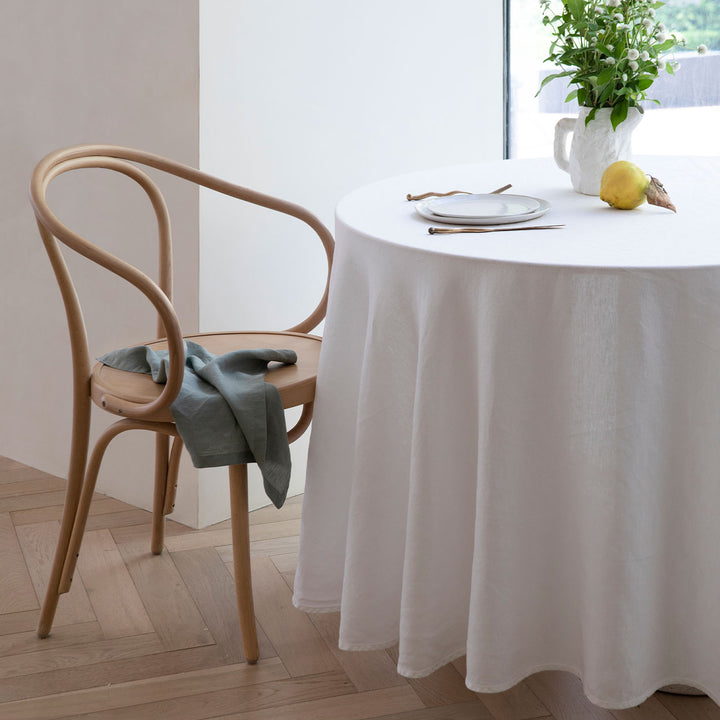Bed Linen Fabric Developments: Discovering Modern Trends and Creative Applications in Design and Textile Market
From lasting production techniques to advanced weaving technologies, the evolution of bed linen is reshaping the landscape of the fabric sector. As we dig into the worlds of creative layout applications and the appearance of linen blends and hybrid textiles, a brand-new chapter unravels in which bed linen's function in future textile innovations takes facility stage.
Lasting Practices in Bed Linen Production
Lasting methods in bed linen production have actually ended up being significantly crucial in the textile sector's efforts to minimize environmental impact and promote honest sourcing techniques. Linen, an all-natural fiber obtained from the flax plant, supplies a series of benefits such as toughness, breathability, and biodegradability. However, typical techniques of bed linen production can include significant water usage, chemical use, and energy-intensive procedures.
To address these challenges, lots of fabric producers are taking on sustainable methods throughout the bed linen manufacturing process. This consists of sourcing flax from organic farms that stay clear of hazardous pesticides and chemicals, applying water-efficient retting techniques to essence fibers from the flax stalks, and using environmentally friendly dyes and coatings. In addition, some business are investing in renewable resource resources to power their production centers and decreasing waste with recycling and upcycling campaigns.
Technical Advancements in Linen Weaving
With the growing emphasis on lasting techniques in linen manufacturing, the fabric sector is currently witnessing a surge in technological developments particularly targeted at revolutionizing the art of bed linen weaving. These technologies are reshaping the method linen materials are produced, supplying boosted performance, top quality, and creative thinking in weaving strategies.
One of the essential technological innovations in linen weaving is the integration of computerized looms. These advanced looms are geared up with software that allows for complex and intricate layouts to be woven with accuracy. By digitizing the weaving procedure, producers can accomplish greater uniformity and precision in their linen fabrics.
Furthermore, advancements in thread spinning modern technology have allowed the manufacturing of finer and more durable bed linen yarns - table cloths. This results in softer and smoother linen textiles that preserve their high quality even after multiple usages and laundries
Additionally, the growth of eco-friendly dyeing procedures and surfaces for bed linen textiles is obtaining grip. These sustainable techniques not only reduce the ecological impact yet likewise deal with the increasing customer demand for morally created textiles.
Creative Style Applications for Linen
Cutting-edge artistic strategies are significantly shaping the innovative layout applications for bed linen in the fabric market. Bed linen's all-natural aesthetic allure and capability to mix with other textiles make it a preferred option for producing one-of-a-kind garments and accessories that cater to the eco aware consumer.
In addition, developers are try out bed linen in home decoration, utilizing its resilient and breathable nature to craft stylish home furnishings such as curtains, bed linens, and upholstery. The structure and drape of bed linen bring a feeling of refinement and convenience to indoor areas, adding a touch of style to contemporary homes.

Bed Linen Blends and Hybrid Fabrics
:max_bytes(150000):strip_icc()/smooth-linen-tableware-sky-24_2000x-e91a79aab4354001b5445ec12d511141.jpg)
Hybrid materials, on the various other hand, take the concept of blending an action further by incorporating added aspects such as metal strings, recycled materials, or conductive fibers. These innovative fabrics not only increase the style opportunities however also present functional facets like conductivity, antimicrobial buildings, or improved sturdiness. Crossbreed materials are increasingly being used in various markets, consisting of fashion, interior decoration, and technological textiles, where the need for multifunctional materials gets on the rise.
Linen's Duty in Future Textile Innovations

In the realm of future textile developments, bed linen is anticipated to be a principal in the advancement of sophisticated useful textiles. Researchers and designers are exploring methods to improve bed linen's integral qualities through technological developments, such as integrating clever fabrics, nanotechnology, and informative post efficiency finishes. These innovations aim to raise bed linen's efficiency attributes, making it suitable for a broader series of applications, from activewear to protective clothes.
Additionally, the mix of bed linen with various other all-natural or artificial fibers opens unlimited possibilities for producing novel fabrics with special homes and performances. By leveraging linen's characteristics and checking out innovative blends, the textile sector is positioned to present interesting developments that cater to evolving customer demands and sustainability needs.
Verdict
In verdict, the expedition of sustainable practices, technical innovations, imaginative style applications, linen blends, and its duty in future fabric developments highlight the continuous advancement of bed linen material in the modern layout and fabric market. With a focus on technology and imagination, the adaptability and environment-friendly nature of linen make it a beneficial product for designers and suppliers alike, leading the way for further advancements and developments in the area of textiles.
As we dive into the worlds of innovative design applications and the introduction of linen blends and crossbreed fabrics, a brand-new chapter unravels in which linen's function in future fabric developments takes center stage.
Checking out the blend of linen with other materials has led to the emergence of ingenious blends and crossbreed textiles in the modern fabric market. Bed linen blends supply a distinct combination of the attributes of linen with those of Get More Information various other fibers, resulting in materials that have improved homes such as increased resilience, boosted draping, and reduced wrinkling.The development of bed linen blends and crossbreed fabrics has set the phase for Bed linen to play a pivotal role in driving future textile technologies.In the world of future fabric innovations, linen is expected to be a crucial gamer in the growth of advanced functional fabrics.